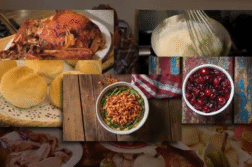Orlando, Fla. (Ivanhoe Newswire) — Artificial intelligence is no longer just a fun tool, it’s a force that’s reshaping how we work. A new Microsoft survey shows three out of four employees now use ai at their jobs, from writing and graphics to data analysis and diagnostics. But how is this powerful technology really affecting the workforce and what does it mean for your career? Careers
From fact finding and data crunching to diagnostics, writing, graphics, artwork — AI is moving into nearly every corner of the workplace.
Research shows 75 percent of workers are already using AI tools in some capacity.
“We think AI is here to stay and is going to change how we do business,” said Ivan Garibay Professor of Industrial Engineering at the University of Central Florida.
In a new report, researchers listed the top 40 jobs affected by AI. Rounding out the top five are: interpreters and translators, historians, people in customer service jobs, sales reps, and writers.
“So, jobs, yes, phase out, will no longer exist in the new ai world, but many, many different jobs will be created. So, it’s our challenge to be future proof by having skills like critical thinking and knowing how to work with the ai as a collaborator,” explained Garibay.
Start by learning the tools. Get hands-on with ai software that applies to your field. Build the human skills that machines can’t replicate, such as critical thinking, creativity, and emotional intelligence. Stay curious and keep learning new technology as it evolves so you’re never left behind. Treat AI as a collaborator rather than a replacement.
Studies show AI often boosts performance for lower-skilled workers but can actually hurt high-skilled employees who rely too heavily on the bot instead of their own expertise. Some jobs that are unlikely to be affected by AI include skilled trades like electricians, plumbers, carpenters, and mechanics. Also, doctors, nurses, therapists and home health care workers may need to learn new tech, but their jobs are irreplaceable.
Contributors to this news report include: Julie Marks, Producer; Bob Walko, Editor.
To receive a free weekly email on Smart Living from Ivanhoe, sign up at: http://www.ivanhoe.com/ftk
Sources:
https://www.microsoft.com/en-us/worklab/work-trend-index/ai-at-work-is-here-now-comes-the-hard-part
https://www.microsoft.com/en-us/worklab/work-trend-index/ai-at-work-is-here-now-comes-the-hard-part



